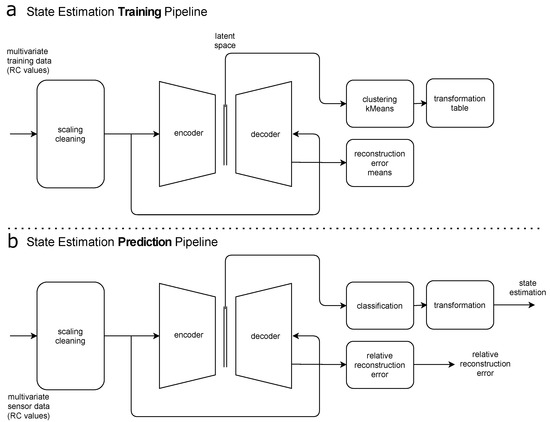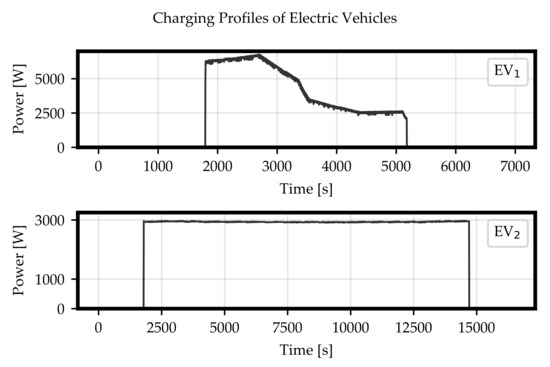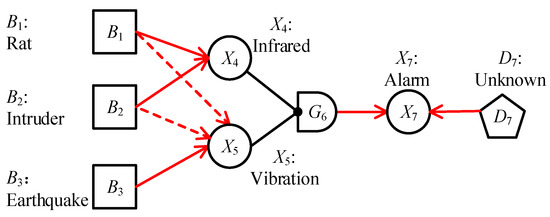Artificial Intelligence and Smart Energy
A topical collection in Energies (ISSN 1996-1073). This collection belongs to the section "F5: Artificial Intelligence and Smart Energy".
Viewed by 23838Editors
Interests: bioenergy; hydrogen energy; clean energy; thermoelectric generation; environmental engineering; AI & machine leaning for energy
Special Issues, Collections and Topics in MDPI journals
Interests: artificial intelligence; forms of reasoning: qualitative reasoning/fuzzy reasoning; artificial learning; data mining; multi-creiteria and multi-atribute decision-making
Interests: computer architectures and algorithms; parallel and distributed computing; energy efficienct computing
Interests: smart grid; control and planning for microgrid; intelligent methods applied to power systems
Special Issues, Collections and Topics in MDPI journals
Topical Collection Information
Dear Colleagues,
We are inviting submissions to a Topic Collection of Energies on “Artificial Intelligence and Smart Energy”.
The increase in human growth, alongside a higher standard of living, encourages the community to engage in progressively more activities. This is evident in the massive energy demand. Unfortunately, the current supply does not adequately meet the demands due to some challenges, including costs, techniques, technologies, resources, human skills, etc. To solve these challenges, certain approaches are utilized. However, the traditional practices, which require more resources such as equipment, labor sources, procedures, etc., are tedious and time-consuming. Presently, times are shifting towards the era of digitalization, where all aspects of life are directed towards being fast, effective, and efficient with the assistance of computers.
Artificial intelligence (AI) offers a smart way to help society achieve goals in a modern manner by implementing techniques involving predictive analytics, claims analytics, emerging issues detection, survey analysis, etc. AI covers a wide range, but the fields were not formally founded until 1956, at a conference at Dartmouth College, in Hanover.
On account of the drastic progress in intelligent energy systems, the AI and Smart Energy Topic Collection aims to provide a platform for showcasing the front-line research at the crossing point between AI applications, smart approaches, and energy systems. This Topic Collection also provides the latest research progress in the multidisciplinary approach to AI in energy systems, technology, development, etc. This Topic Collection considers full-length articles, short communications, perspectives, and review articles. Focal points of the AI and Smart Energy Topic Collection include but are not limited to:
- Energy topics:
- Solar thermal energy;
- Hydropower;
- Geothermal power;
- Wind power;
- Marine energy;
- Biomass and bioenergy;
- Hydrogen energy;
- Nuclear energy;
- Fossil and green fuels;
- Energy storage and saving;
- Energy management;
- Smart grids;
- Energy sustainability;
- Energy modeling.
- Statistical approaches:
- Taguchi method;
- Response surface methodology;
- Analysis of variance;
- Linear regression;
- Others.
- Artificial intelligence and evolutionary computation:
- Genetic algorithm;
- Particle swarm optimization;
- Nelder–Mead algorithm;
- Multi-objective genetic algorithm;
- Others.
- Data mining and analysis:
- Neural network;
- Convolutional neural network;
- Multivariate adaptive regression splines;
- Decision tree;
- K-means clustering;
- Others.
Prof. Dr. Wei-Hsin Chen
Prof. Dr. Núria Agell
Dr. Zhiyong Liu
Prof. Dr. Ying-Yi Hong
Collection Editors
Manuscript Submission Information
Manuscripts should be submitted online at www.mdpi.com by registering and logging in to this website. Once you are registered, click here to go to the submission form. Manuscripts can be submitted until the deadline. All submissions that pass pre-check are peer-reviewed. Accepted papers will be published continuously in the journal (as soon as accepted) and will be listed together on the collection website. Research articles, review articles as well as short communications are invited. For planned papers, a title and short abstract (about 100 words) can be sent to the Editorial Office for announcement on this website.
Submitted manuscripts should not have been published previously, nor be under consideration for publication elsewhere (except conference proceedings papers). All manuscripts are thoroughly refereed through a single-blind peer-review process. A guide for authors and other relevant information for submission of manuscripts is available on the Instructions for Authors page. Energies is an international peer-reviewed open access semimonthly journal published by MDPI.
Please visit the Instructions for Authors page before submitting a manuscript. The Article Processing Charge (APC) for publication in this open access journal is 2600 CHF (Swiss Francs). Submitted papers should be well formatted and use good English. Authors may use MDPI's English editing service prior to publication or during author revisions.
Keywords
- artificial intelligence
- smart energy
- intelligent energy system
- smart approaches
- AI technology
- AI development
- statistical approach
- evolutionary computation
- data mining
- data analysis















